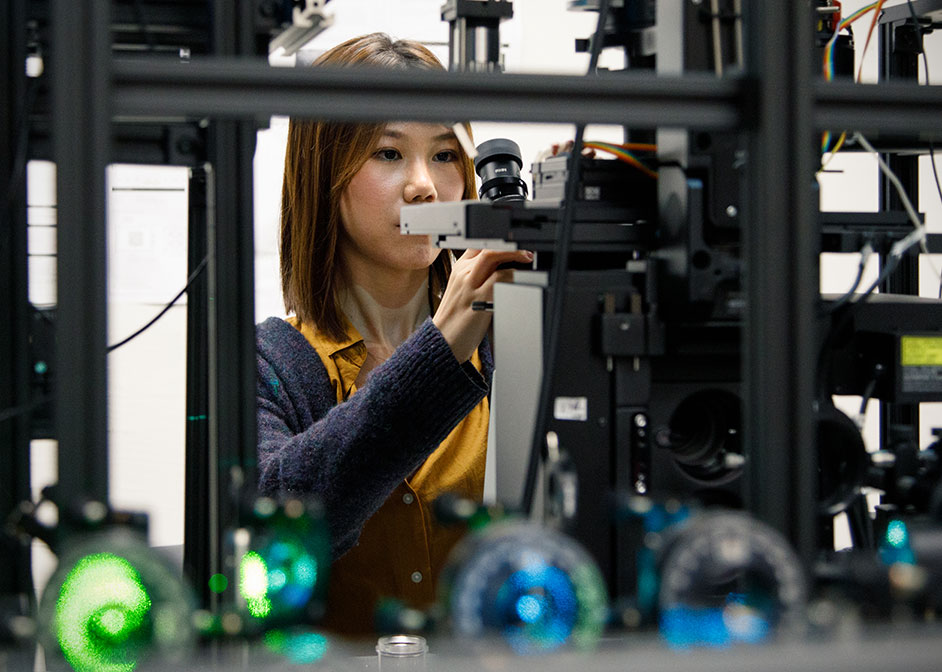Chemistry’s Xihong Xie Gains Specialized Training in Grad School
Xihong Xie, a University of Houston Ph.D. student in chemistry, published a paper in the Journal of Physical Chemistry B that elucidates a method for imaging different protein forms, called oligomers, in cells.

“For Xihong to have published a first-author paper so early in her graduate career is a testament to her hard work and dedication,” said Tai-Yen Chen, an assistant professor of chemistry in the College of Natural Sciences and Mathematics, who serves as Xie’s advisor.
Imaging Proteins in Cells
“Most methods require extracting proteins out of the cell,” Xie said. “We wondered if we could get this information directly from the cell, which would be more meaningful.”
An oligomer is a protein composed of two or more subunits called monomers. Within the bustling network of a cell, the association and disassociation of monomers into different oligomers can play an important role in how a protein functions. Transitioning between different forms can turn a protein on or off, slow down or speed up the rate at which it works, as well as change what role it plays.
Single Molecule Localization Microscopy Can Image Proteins in Cell
In this paper, Xie and collaborators describe a methodology to image different oligomeric forms of proteins in cells. The team achieved this by using a type of microscope, called single molecule localization microscopy (SMLM), to quantify the states of proteins within cells.
The methodology developed by Xie and her collaborators uses proteins that have been tagged with a green fluorescent marker. After using a brief laser pulse to shift single proteins in the cell from green to red, a protein’s location and movement through a cell can be imaged.
“Quantifying the amount of protein that is in an oligomeric state will help us understand more details about its function inside the cell,” Xie said.
Examining Different Protein Forms in a Cell Membrane
Xie’s research looked at proteins located on the membrane of a cell, where the transition between different oligomeric states is known to play a role in how these proteins function, such as how a signal is relayed from the outside of the cell to the inside.
To image these different oligomeric forms in cells, Xie and collaborators worked out a method that combines SMLM with simulations that account for a protein’s density, based on its various forms. Using this method, she has been able to devise a method for calculating the distribution of different oligomeric forms.
Xie taught chemistry for several years after receiving her bachelor’s degree. She decided to apply to Ph.D. programs because she wanted a more specialized training.
“If you really like research, you can learn a lot in grad school,” Xie said.
This research was funded by a grant from the Welch Foundation.
- Rachel Fairbank, College of Natural Sciences and Mathematics